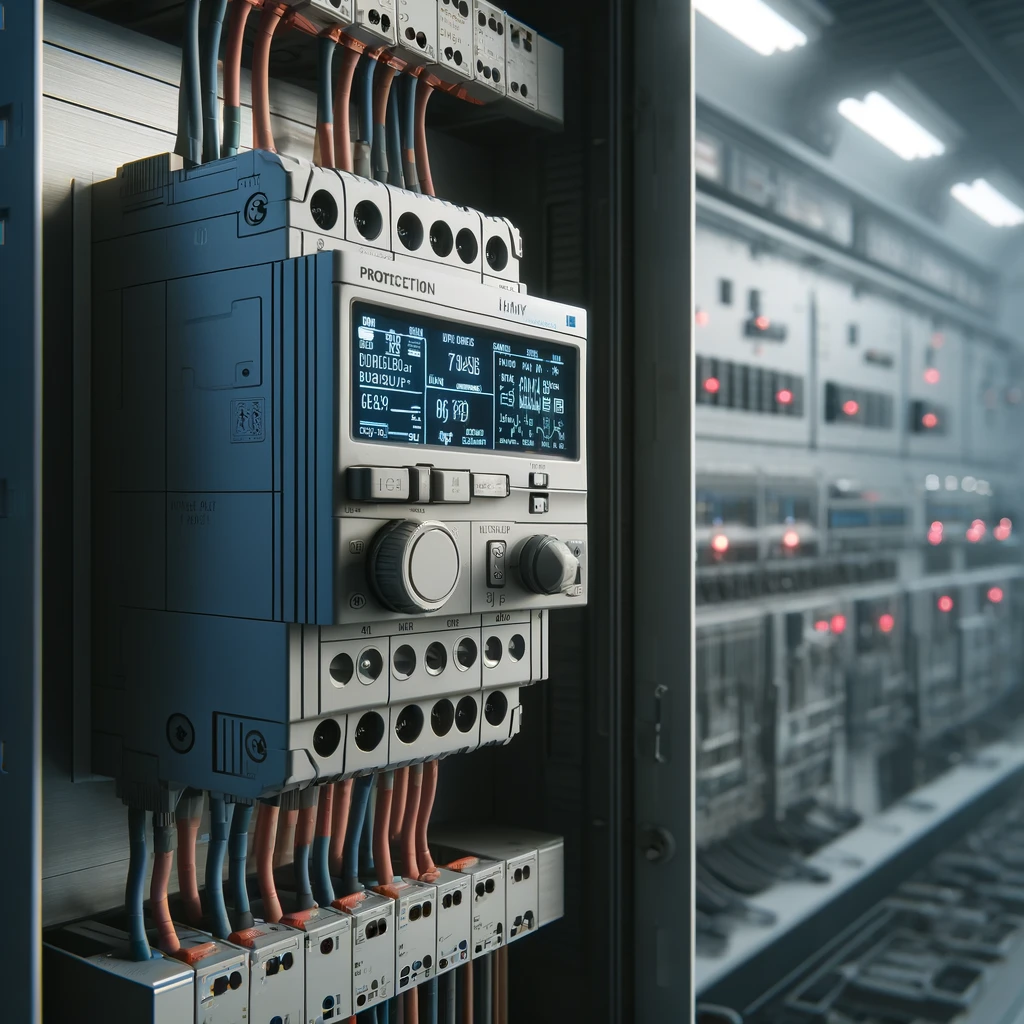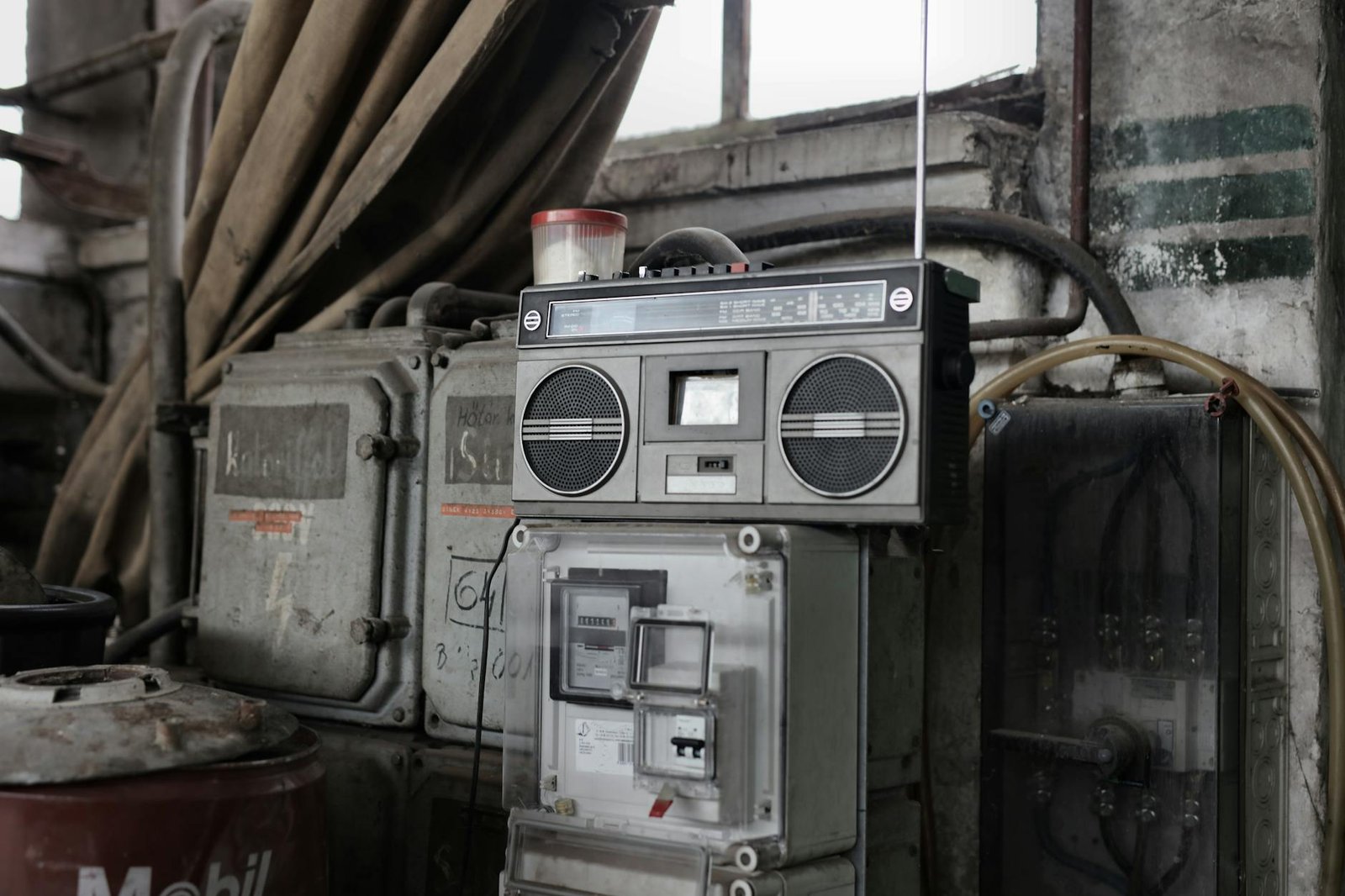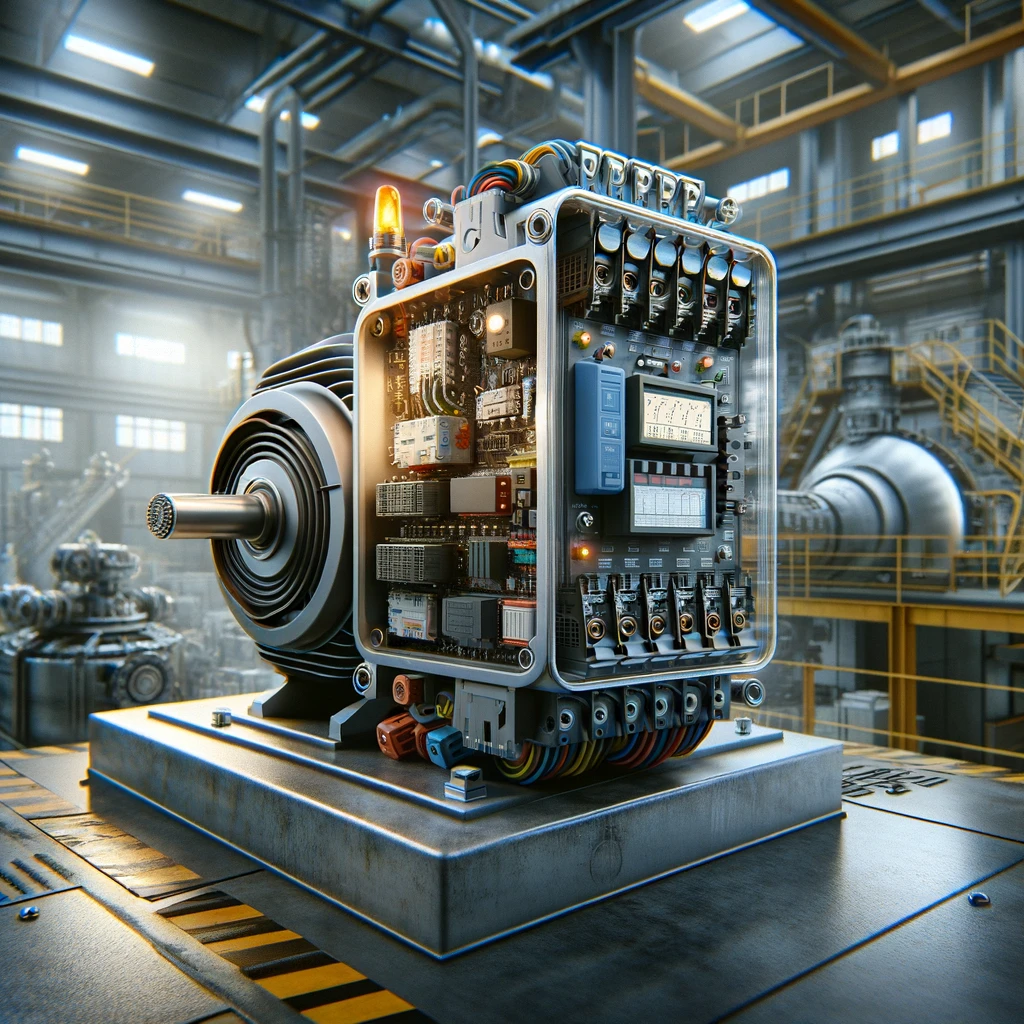Appreciating the Role of a Protection Relay
Ever thought about the unseen heroes that ensure the functionality of electrical installations in every construction project?
Do you know that these unsung warriors, known as protection relays, play a pivotal role in preventing catastrophic electrical faults?
As you read on, you will find that understanding the purpose and functions of a protection relay illuminates the complexities and safeguards within construction scenarios.
Prepare to be enlightened on the topic of protection relays, their types, functionalities, and benefits!
Table of Contents
Breaking It Down: Protection Relay Explained
What is a Protection Relay?
Have you ever wondered how critical electrical systems are safeguarded in construction projects? Enter the protection relay – a crucial component in ensuring the safety and functionality of electrical installations.
Definition:
A protection relay is an electrical device designed to automatically detect any abnormal electrical conditions, such as overloads, short circuits, or voltage fluctuations, and initiate corrective actions to prevent damage to the electrical system or connected devices.
How Does a Protection Relay Work?
Protection relays continuously monitor the electrical parameters of a system, such as current, voltage, and frequency. When a fault or abnormal condition is detected, the relay sends a signal to interrupt the circuit, isolate the faulty section, and prevent further damage.
Types of Protection Relays:
- Overcurrent Relays
- Differential Relays
- Distance Relays
- Directional Relays
- Earth Fault Relays
- Temperature Relays
Benefits of Protection Relays:
- Enhanced Safety: Protection relays help prevent electrical accidents and fires by quickly responding to faults.
- Equipment Protection: They safeguard electrical equipment from damage due to overloads or short circuits.
- System Reliability: By detecting and isolating faults promptly, protection relays contribute to the uninterrupted operation of electrical systems.
Now that you understand the importance of protection relays in construction, you can appreciate their role in maintaining the integrity and safety of electrical installations.
What other construction terms would you like to learn about?

Further Aspects of Protection Relay Functionality
Protection Relay Settings and Coordination
What would happen if there was no proper coordination between protection relays in an electrical system? Chaos would ensue, leading to unnecessary shutdowns and damage. Therefore, the role of protection relay settings and coordination can’t be overstressed.
Protection Relay Settings
Beyond simply installing a protection relay, technicians must fine-tune its settings. This means adjusting the relay according to the specific needs of the system. The settings on a relay can be changed to determine the desired trip times, the level of current that will activate the relay, and even the type of fault to respond to, among other factors. Therefore, relay settings are crucial for optimizing system protection.
Protection Relay Coordination
A well-coordinated relay network ensures that the response is proportional to the severity of the fault. Essentially, coordination means that the protective device closest to the fault trips first, avoiding unnecessary outage of healthy sections. This concept ensures that most of the system remains operational while the problematic section is isolated, promoting system availability and safety.
In-Depth Look at Some Protection Relays
Overcurrent Relays
Overcurrent relays are designed to detect any current higher than a predetermined level. When such a level is detected, the relay sends a signal to trip the circuit breaker, isolating the affected segment.
Distance Relays
Distance relays, also known as impedance relays, make their operation decision based on the voltage-to-current ratio in a power system. They are particularly useful in long-distance electrical transmission lines where the impedance of the line plays a significant role.
The Future of Protection Relays
As technology evolves, so does the functionality of protection relays. The advent of digital technology has opened up new possibilities for predictive analytics, real-time monitoring, and more advanced fault detection and isolation methods. For example, intelligent electronic devices (IEDs) and digital protection relays are increasingly implemented in smart grids, representing the future of system protection.
Indeed, the world of protective relays is vast – with each relay type offering unique benefits and drawbacks, and newer technologies pushing the boundaries of what’s possible.
What does this mean for your construction project?
More reliability, more safety, and ultimately, more success.
But how else could the advancements in protective relay technology impact the future of construction? The possibilities are intriguing and full of potential.

Control Relays: Differentiating from Protection Relays
What is a Control Relay?
While we have extensively looked at protection relays, what about control relays? Are they the same, or are they chalk-and-cheese different?
Definition:
A control relay is an electrically operated switch used to control a circuit’s electrical power. Unlike protection relays that guard against faults, control relays are principally used to control the switching of smaller currents in a control circuit, such as turning a device on or off or switching between different electrical paths.
Applications of Control Relays
Control relays are used extensively in industries like manufacturing, automation, HVAC, and lighting systems. They effectively give low-voltage and low-current control circuits the ability to switch higher voltage and current circuits efficiently and safely.
How Does a Control Relay Work?
In essence, control relays act as an intermediary. When a low-voltage signal is sent to the relay, it activates an electromagnet within the relay. This electromagnet then either closes or opens the high-voltage circuit, hence effectuating control without the need for direct interaction between the low and high voltage circuits.
How Does a Control Relay Differ From a Protection Relay?
Could you point out the differences between a control and protection relay, given their similar underlying mechanisms?
Main Differences
Although both control and protection relays use electromagnetic principles to operate, the key differences lie in their applications and functionality:
- Function: Control relays are used to control electrical circuits, typically in response to low voltage signals. In contrast, protection relays are employed to detect faults and isolate faulty components to protect the overall electrical system.
- Scope: Control relays tend to govern smaller currents and voltages within a control circuit, whereas protection relays monitor and regulate more substantial electrical parameters, including frequency, voltage, and current.
- Response: A control relay’s action is typically an anticipated response to a control signal, such as switching a machine on or off. Conversely, a protection relay’s activity is performed in response to an abnormal condition detected in the system.
Remember, though, the specific function of any relay depends on the system in which it’s deployed.
The marvels of electrical engineering become apparent when discussing control and protection relays. Although similar, their distinct functions demonstrate the complexity and rigor entailed in managing electrical systems.
With knowledge of control relays, it’s intriguing to think about what you could achieve with an in-depth understanding of both types of relays, right?

Switching Gears into Motor Protection Relays
The Importance of Protecting Motors
An important sub-category of protection relays is motor protection relays. Failure to protect an electric motor can lead to overheating, mechanical stress, and even complete failure. This poses the question: if you’re in charge of an industrial facility reliant on various electric motors, wouldn’t you want to ensure their proper functioning and longevity?
Motor Protection Relay Functionality
A motor protection relay is structured to safeguard motors from potential fatalities and associated problems that could interrupt operation. Potential threats to the motor may include overloading, phase loss, thermal overload, and more.
These specialized relays continuously monitors motors’ operational parameters, like current and temperature. Upon detecting an abnormal condition that may lead to motor damage, the motor protection relay trips the circuit breaker, terminating the motor’s power supply timely to avoid further harm.
Understanding Motor Protection Relay Settings
An integral part of maximizing motor protection relay efficiency is tailoring the settings specific to the relevant motor characteristics. These may encompass parameters such as full load current, thermal limit, service factor, and trip class.
Motor Protection Relay Types
Just as with general protection relays, there are multiple types of motor protection relays.
- Thermal Overload Relays: Designed to protect against overheating caused by overload
- Phase Loss Relays: Detect abnormal power supply conditions like phase loss or unbalance
- Phase Reversal Relays: Protects the motor from potential damage due to phase reversal
Motor Protection Relay Advantages
Imagine the peace of mind that comes with knowing your motors are guarded against potential malfunctions. It’s priceless, isn’t it? Here are several benefits of motor protection relays:
- Risk Mitigation: Helps avoid costly and inconvenient disruption due to motor failures
- Cost Savings: Increases motor lifespan, reducing replacement costs over time
- Improved Safety: Reduces the chance of fires or accidents caused by motor malfunctions
- Increased Efficiency: Ensures optimal motor performance by preventing unwarranted damages
Motor protection relays are another string to your protective bow, or tool in your arsenal if you will, in mitigating risks associated with running an electrical system. When deployed and used correctly, they offer substantial advantages in ensuring the smooth running of operations, safety and cost effectiveness.
In the end, a well-protected system is reliable, robust, and resilient. Now, isn’t that something all of us would want to achieve in our projects?

Wrapping Up: Protection Relay Essential
Protection relays play an indisputable role in safeguarding electrical systems in construction projects. As we’ve seen, they’re specifically designed to detect any abnormal electrical circumstances and immediately initiate corrective actions.
This not only protects our electrical systems but also enhances safety by reducing electrical accidents, potentially saving lives and expensive equipment from damage.
With a range that includes overcurrent, differential, distance, directional, earth fault, and temperature relays, these devices cater to a wide spectrum of construction needs. The simple fact that they help maintain the viability and safety of electrical installations in constructions grants them a significant spot in the realm of construction terminology. If construction lingo has always intrigued you, feel free to explore more!






